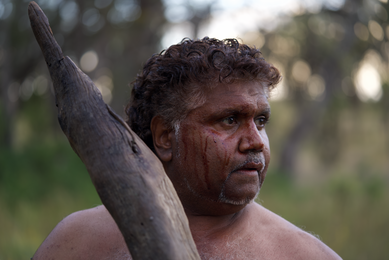
ARTIFACTS
ground edge axes & battle axes
grinding stones
CULTURAL
OBLIGATION
Battle axes are strong and durable with varied uses. Natural resin and plant fibre or kangaroo sinew were often used to bond or protect the wood aspects of the axe and can be noted in the darkened resin that coats them.
Unfortunately, because they are obviously Aboriginal artIfacts, many have been taken by artIfact collectors and the general public.
We know little about these collected axes: information about their age, original location and links with other artIfacts has been lost forever.
Natural processes such as wind and water erosion may disturb axes, but human interference such as ploughing and development (and particularly souvenir collecting) poses the greatest threat to these artIfacts.
First Peoples - State Relations records the location, dimensions and condition of Aboriginal ground-edge axes. The aim is to have a permanent written and photographic record of this important part of the heritage of all Australians.
If you find a 1st Nation Axe:
-
Do not disturb or remove it
-
Check whether the object has the typical characteristics of an Aboriginal ground-edge axe
-
If it does, record its location and write a brief description of its condition
-
Note whether it is under threat of disturbance.
Grinding Stones slabs of stone that Aboriginal people used to grind and crush different materials. Usually made from abrasive rocks such as sandstone or coarse-grained basalt or quartzite.
Characteristics
-
Grinding stones made from sandstone or quartzite are usually flat. Basalt stones can be more rounded
-
grinding stones have a worn depression, varying in shape from a circle to a long thin groove
-
The depth of the grinding area will vary, and a hole may have formed where the stone is completely worn away
-
May be traces of food or pigments on the stone. Fats may leave glossy stains
-
Depressions or grooves may occur on different sides of the same stone
-
Some grinding surfaces have carved lines
Here the Grinding groves were used to sharpen spears.
Artifacts are prevalent throughout Bassendean and the battle mounds hold these war weapons within its sanctuary. These are to be removed every Summer or Wildfire season for threat of loss. Flooding loss should not affect these weapons or implements as they are well above watermark levels to the exception of weather conditions of disaster management beyond control.
This obligation is to commence effect immediately and to be in place for generations to come. This also comes with knowledge and trustworthy guardianship; being exposed to the open elements of Nimula.
This comes with a trust that these items are culturally intact to where they were originally placed in respect of the warrior or reflecting the area of weaponry and projectiles left in places of arsenal retrieval hiding spots. From the battle of Nimulas events.
These locations should remain discrete to ensure artifacts are not taken. Nimula has to be fenced and regulated of pest and domestic animal control as accordingly fire containment lines, naturally through fire regime or slashing & brush cutting.
Artifacts are at risk of damage due to such factors and it is imperative our cultural obligation be honored as these implements are our living heritage and evidence of our Old People.
Groove sites are to be maintained using fire preservation methods and due diligence of respect with maintaining through the correct sharpening tools for grooves maintenance .
This is only through an applied individual with a focused interest and knowledge in this subject of knowledge or learnt from what the Old People have already left in the landscape and their knowledge of ingenuity and materials sources.


